Workday Prism software training offers comprehensive to individuals and organizations seeking to improve skills and performance, our programs help you accomplish your objectives and potential.
We offer a program for you whether you want to learn new skills, update your knowledge, or boost your productivity, our skilled instructors will help you grasp and apply the information.
Our programs yield quick results due to our hands-on learning and real-world application. So why delay? Get started with GraphPad prism training.
It teaches how to collect, analyse, and evaluate HR data to understand employee engagement, turnover, recruiting, and productivity, they will also learn how to automate data analysis and reporting with HR analytics tools and software to detect HR data trends and patterns.
HR analytics
It teaches HR professionals how to use data analysis and measurement tools to improve decision-making and performance.
Today’s fast-paced, data-driven business climate requires HR directors to use data to make strategic decisions and improve organizational performance, making this training essential.
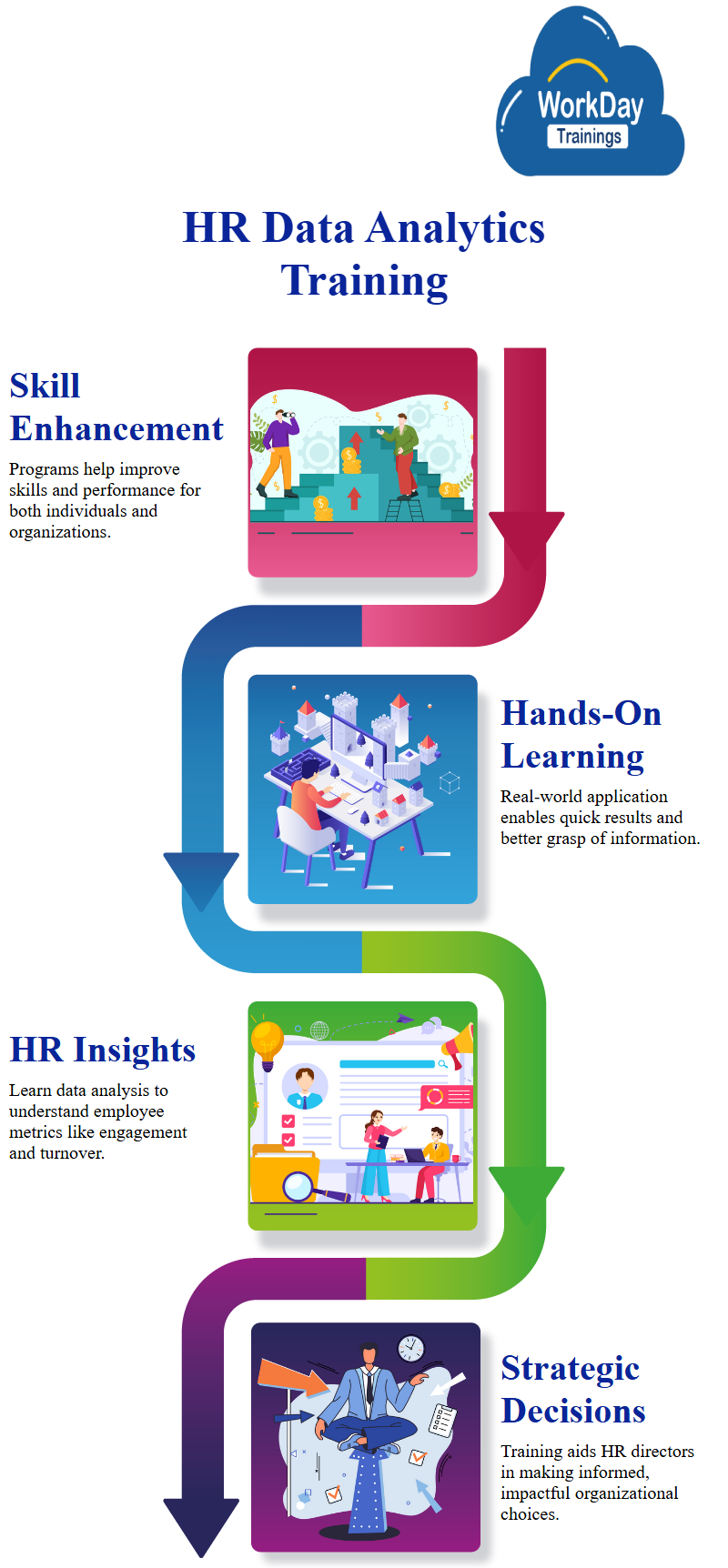
HR analytics has many benefits, directors may make better strategic decisions, boost employee engagement, and boost corporate success by understanding HR analytics, analytics training can also assist HR professionals keep up with industry trends and best practices and learn in-demand skills.
HR professionals need HR analytics training to strengthen their abilities and compete in today’s fast-paced business climate, it can help you boost your career, whether you’re a new hire or an experienced leader.
Blue prism Training
Data analytics is growing vital in business, companies require data analysts and interpreters to make informed decisions with the massive amounts of data collected daily.
It covers data visualization, statistical analysis, machine learning, and data mining, experienced data analysts who have worked in the field train our programs, keeping them current.
Blue Prism Training is a program for individuals and organizations looking to teach personnel in data analytics, our on-site or online sessions are flexible and convenient for all sizes of organizations.
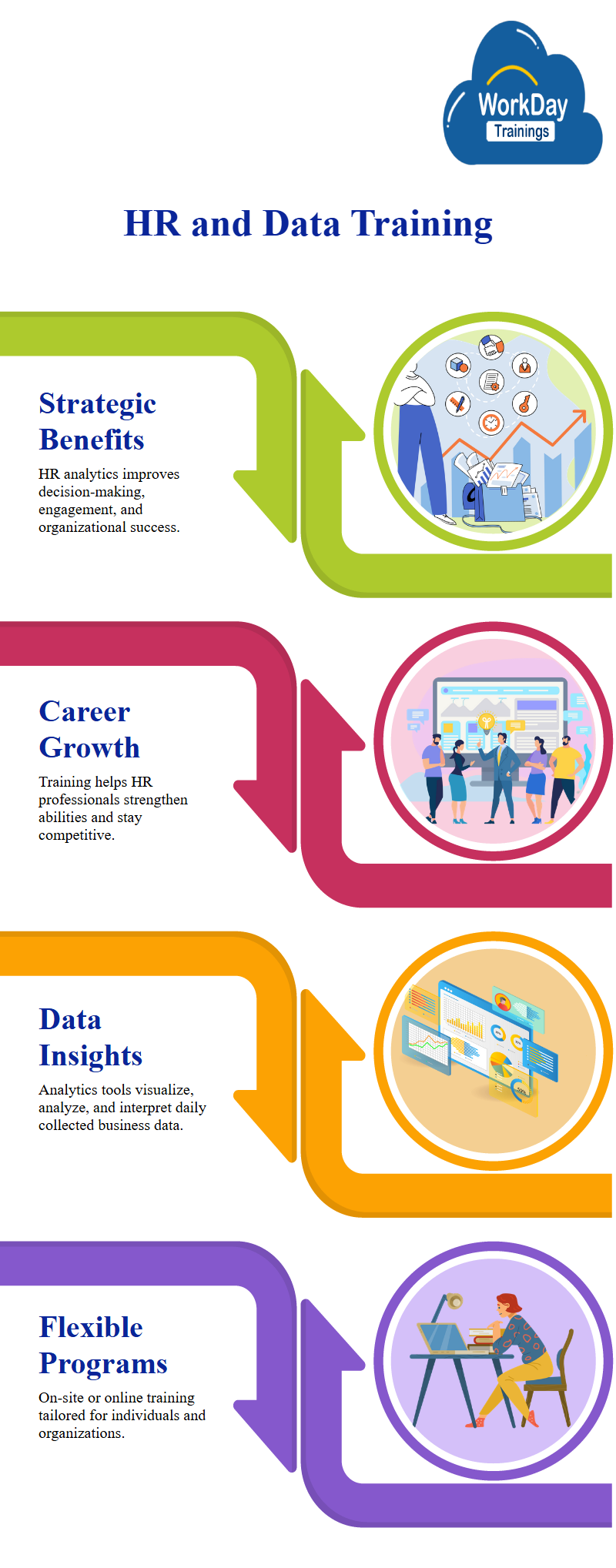
Our training will teach you: Workday Prism Analytics Tools
Configure Workday Prism Analytics.
Maintain reports and dashboards.
Data analysis and interpretation utilizing built-in and bespoke analytics
Create and share custom dashboards and reports
Workday Prism Analytics integration with other systems and data
Workday Prism Analytics maintenance and optimization best practices
Our expert trainers will lead you through the curriculum with hands-on exercises and real-world examples to help you apply the principles, after the session, you will be confident in using Workday Prism Analytics to make data-driven decisions in your organization.
Take advantage of Workday Prism Analytics’ full potential. Join our Workday Prism Analytics course now to make data-driven decisions like never before!
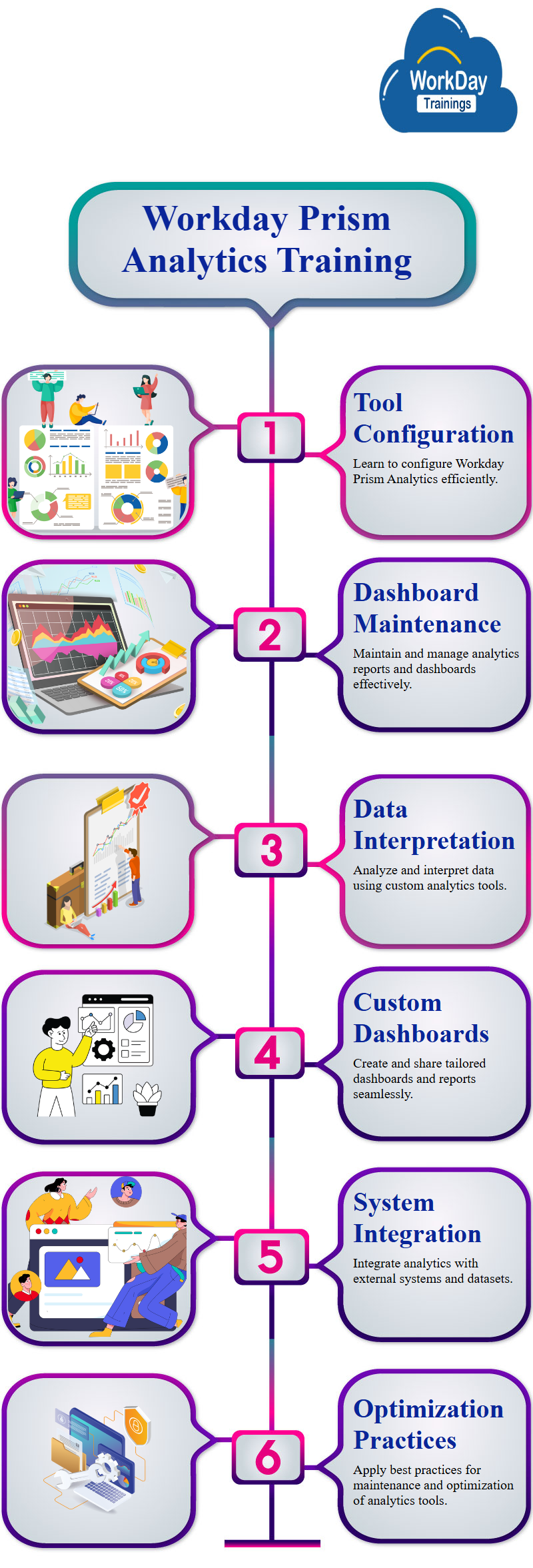
What is workday prism Analytics
Are you looking to boost your workday productivity? Just use Workday Prism training! This comprehensive curriculum will teach you how to leverage the newest technology to improve workflow and achieve your goals.
Prism is a strong tool for task management, progress tracking, and teamwork, its easy UI and advanced functionality let you work faster.
The training will teach you how to build and manage projects, assign tasks, and track progress with Prism, you’ll also learn how to collaborate, share files, and interact with the tool.
The course is hands-on and interactive, so you may experiment using Prism and ask questions, the course will provide you the skills and expertise to use Prism efficiently in your profession.
It is ideal for project managers, team leaders, and productivity optimists.
Dynamic Data Publishing for Customizable Reports
The data source is published, and all fields are included, allowing users to create custom reports, however, the data will keep changing as the user hires more employees.
This results in new data being added to the published data source, to make the new data available, the user must manually publish it.

Understanding Pipelines and Data Sets in Derived Datasets
This describes about the stages of pipeline. The pipeline which brings in data from the source, the output of the first stage is then used to input the second stage, and so on.
In a base data set, the output of the primary pipeline is the output of the entire BDS, as there is only one pipeline, however, in a derived data set, each pipeline has an output, and the final output of the derived data set is the output of the primary pipeline.
Pipelines and data sets are important concepts because they are where all transformation occurs, in this data set, Parts is the stage that is automatically added, and it is possible to add additional stages, however, only three stages can be added to the derived data set.
Understanding Pipelines in Data Transformation
Now coming to the stages of pipeline we can say that a pipeline is a container of stages, which model the flow of data and define a single transformation action on the data, each stage performs one action on the data, defining a single transformation action, the first, second, and third stages of a pipeline are the first, second, and third stages of the data set.
The transformation logic defined by each stage defines the data flow and preparation within the pipeline, it uses Prism for data transformation, data preparation, blending, cleansing, and modification, each stage performs one action on the data, defining a single transformation action on the data.
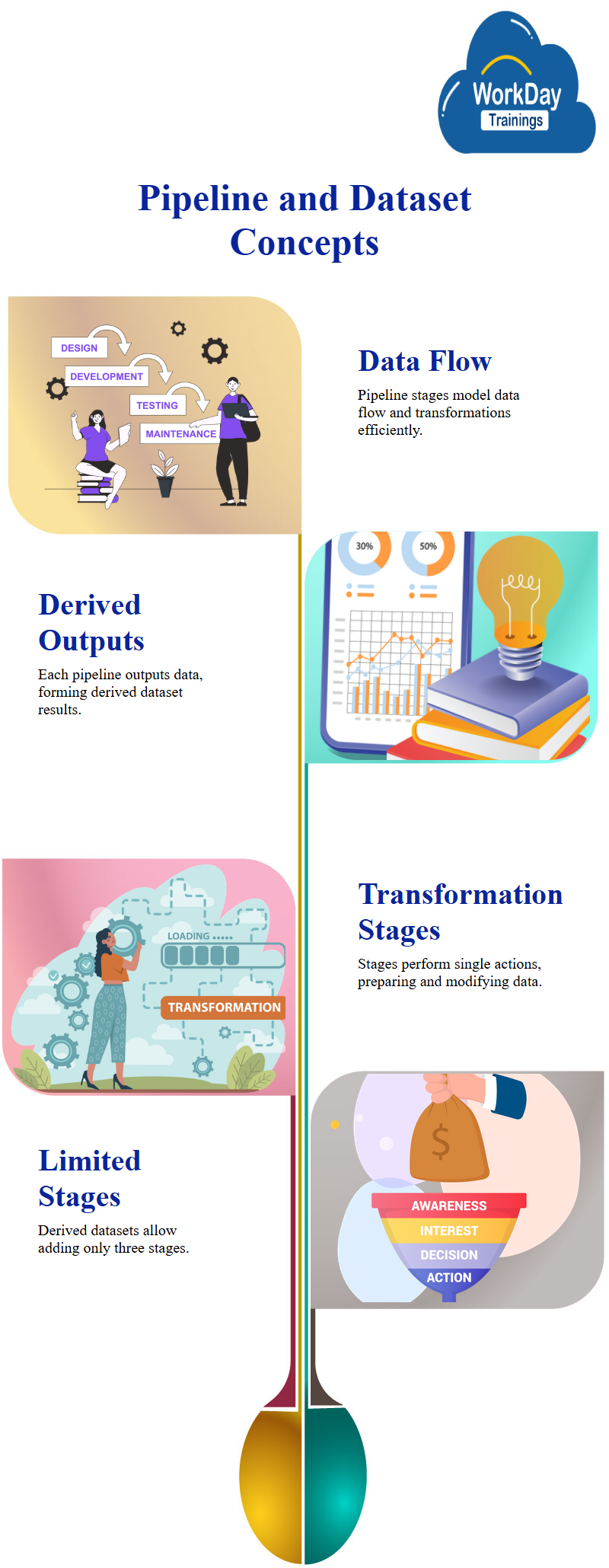
Creating Data Sets with Prism Workday
The creation of prism calculated field expressions and the concept of null values, as the data sets are created, the text will cover different field types, field mappings, and the different stages.
Workday Prism Analytics Software Joining Reports
Let’s discuss about the join reports we can say that it helps how to join data from two reports, considering their different data sources and business objects, they use the group by field parameter to group multiple reports together, not referring to the business object or data source.
Defines the data field, which allows for fetching sub reports based on a report type, the report time group field is used to display sub reports based on the report type.
Composite Report for Advanced
Here we going to see how reports are built on different business objects, when users cannot use more than one workday business objects on a single report.
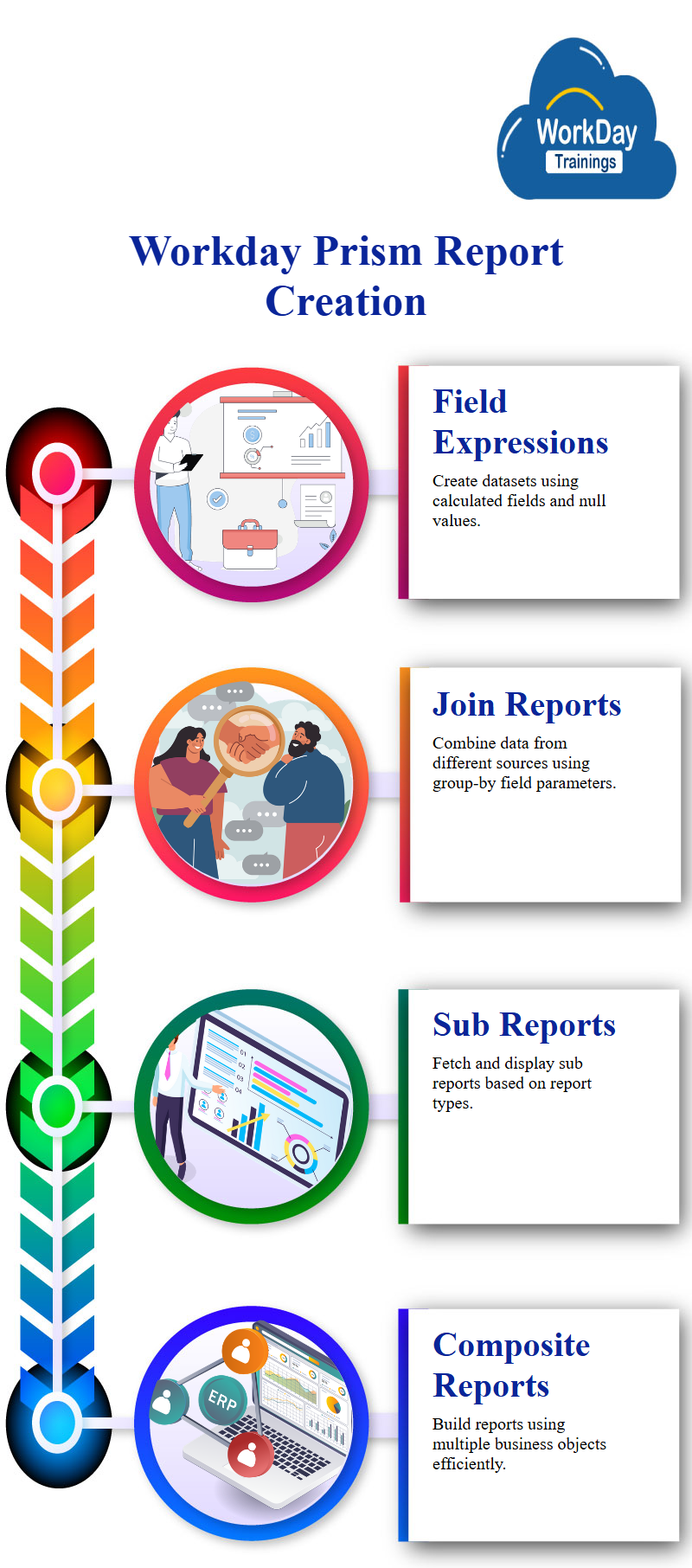
The goal is to get the total number of reports of type advanced and type matrix, but this is not possible due to the different data sources and workday business objects.
To achieve this type of scenario, users can create a composite report that aggregates the data from both types, such as advanced and matrix reports, this way, they can get the desired information on a single report, but the data is not available on both types.
Workday’s Two-Way Conversion with Null Values Replacement
Let’s look into the workday’s two-way conversion which occurs when no values are initially added to the custom report. When converting the data source and publishing it, null values are replaced with blank, zero, or false, based on the field type.
Customizing Data Sets with BDS
The third purpose of the BDS is to view field changes in data sets. Initially, data was loaded through workday custom reports or external files, but over time, the system would continue to use these data sets.

To change the data source, users can edit the workday custom report add new fields, such as employee ID and age, this changes the data source, causing new fields to be added when importing data into the base data set.
Understanding Data Set Merging
Let’s see how to create a single table by joining all data sets, consider an example by create a union stage, union allows for adding rows from one table to another, while join deals with joining columns of one table with columns of another table. In this case, there may be additional rows added.
Using Eval Expression to Determine workday manager Count
Here we going to see about the calculated fields report also includes a summarization of the count of managers, which is needed to determine the number of managers in each company. To do this, the user creates a calculated field called eval expression, which evaluates a series of conditions. If the condition is true, the corresponding value is returned. If it returns false, the system checks the subsequent condition and returns the default value.

Counting International Assignees in GMS US
The report also checks if the person is an international assignee, which is a workday-delivery field. If the condition is true, the system returns one, and if not, the default value is zero. Users can add any additional conditions to the eval expression field, such as whether the person is on an international assignment or not.
The report shows that there are two workers in GMS US, out of which one is an international assignee. The function of type evaluate expression returns a numeric value if the person is an international assignee, or zero otherwise. The system calculates the number of international assignees by adding the calculated field value, which is either one or zero.
International Assignee Identification
To know only those two international assignees, the user can modify their detailed data by adding a new column to determine if the person is an international assignee. This will return yes if the person is an international assignee, and no otherwise. The data will be sorted in descending order, with all international assignees at the top.
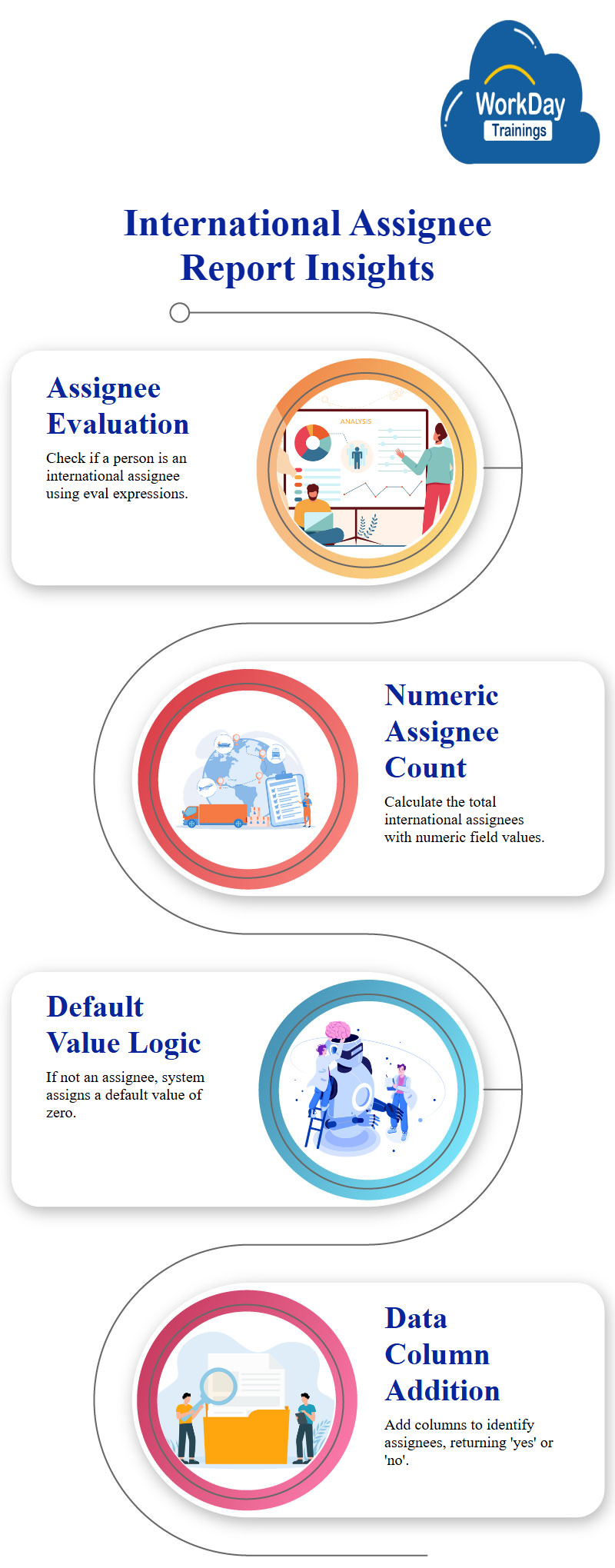
Customizing Data Overrides for International Assignees
The second way to handle this is to create a detailed data override for the second summarization. This will allow the user to specify the columns to display only when the person is an international assignee. For example, the user can add worker and age to the detailed data override, but only two columns will be displayed.
Overriding Defaults in Reports
When running the report again, the user sees that the default detailed data is all 345 workers with six or seven columns. However, the second summarization only displays two columns: worker and age, and only three rows are displayed. This is because the user created a detailed data override for the second summarization.
Workday Prism Analytics Tutorial
Here lets discusses the use of various functions in a database, including the ability to convert numeric values to two decimal places. They mention that most of the calculated fields have decimals, so they need to add a new management stage to modify these calculations. Coming to the process of creating a calculated field in a join and then adding the workday calculated fields a new management stage.

Using Scorecards for Advanced Reporting
Next let’s discuss the use of scorecards in a workday project they worked on. Scorecards are part of advanced reporting and help track overall trends in the system. They provide monthly data on employee headcount, female, gender, employee type, and international assignment. Scorecards are created using composite reporting and are summarizations of data, such as the count of employees, females, and males
The count system in Workday does not count gender, female, or male. Instead, it creates case-related functions to define different metrics, such as headcount, termination count, employees on international assignment, and age. Scorecards are created by adding up these values and defining different metrics.
Workday Data Set Creation Handbook
Let’s see how to create a data set in Workday, which does not require any schema or columns. A data set is a collection of metadata and transformation logic for underlying data, and it is essential to maintain the schema once created. Workday automatically creates schemas for data sets, which are override aliases.

Harsha
New Technology, let's explore together!

